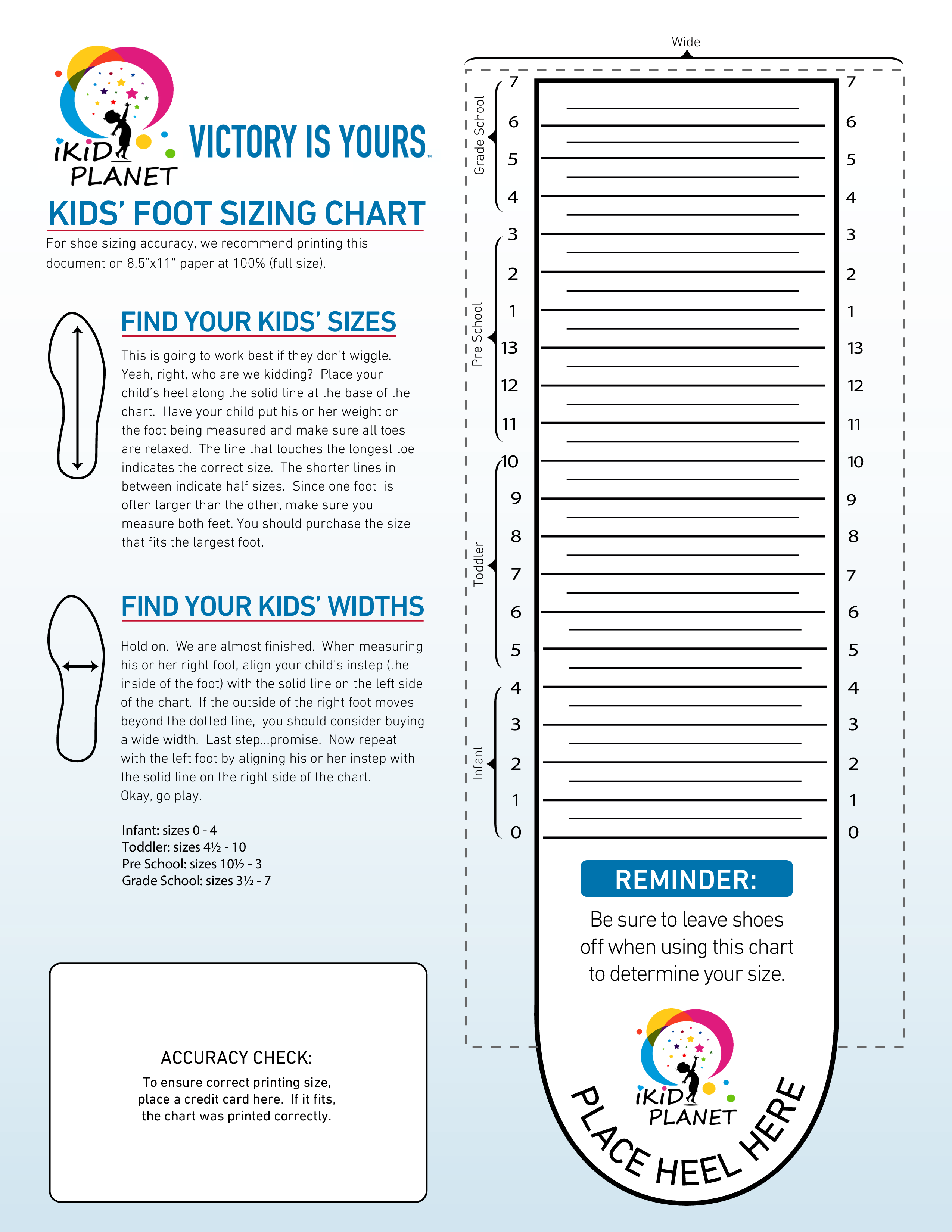Printable Shoe Size Charts
Our printable foot measurement charts will help you determine your shoe size. To measure your foot, click on the appropriate link below, print the page that appears and follow the directions on your print out. You will need Adobe Acrobat Reader to view these shoe size charts.
Finding the right shoe size for babies and young children is often a struggle. Figuring out their specific shoe size, converting measurements, and keeping track of how much their feet are growing makes is difficult to buy the right shoes.
Use our print out shoe size guide to save yourself the hassle and make finding the perfect fit for your child’s shoes easier than ever. The print out guide has easy to follow instructions – all you need is a space for measuring, tape, a pencil, and some scissors. You will need access to Adobe Acrobat Reader to view the printable document in the right size and format. Once you have it printed out, measuring your child’s shoe size will be a breeze. If you have the chance, check out our collections of baby and toddler shoes once you’ve found the right size for your child.
Buying shoes for your child has never been as easy with all of the options available with online shoe shopping. Save your child the stress of going to the store and trying on every pair of shoes that you find. Equip yourself with the proper sizing and measurements and make your life easy by shopping for your kids shoes online.
Tips For Shopping Online For Kids Shoes
Infant Shoes
Infants are the hardest to shop for because their feet grow the fastest. A child’s feet can grow to be almost half of their adult shoe size in the first year of their life. Toddler’s shoe sizes tend to go up one size roughly every 3 months. Consider buying a shoe that is slightly too big to get more use out of it.
Children’s Shoes
Children’s shoes are often firmer than toddler shoes but still require flexibility. Between the age of four and five, most kid’s feet grow half a shoe size every four to five months. You can buy shoes that have some wiggle room but you should avoid buying shoes that are one size too big to avoid blisters and tripping.
Youth Shoes
Youth shoe sizing is applicable for children above the age of 6. At this age, kids tend to get a lot more active and need proper fitting athletic shoes. Athletic shoes that provide sufficient arch support will decrease the likelihood of developing any injuries and minimize inflammation of the heel growth plate.
Shoe Size Conversion Charts
Use the shoe size conversion table below to find your kid's size according to age.

FREQUENTLY ASKED QUESTIONS
The correct fit for kid’s shoes should leave roughly 1/4 of an inch or 0.7 cm of space between the end of the shoe and your child’s longest toe. This should ensure a comfortable fit and also provide adequate growing room.
The most important factor is whether or not the shoe fits comfortably. However, you should always leave some room for your child’s feet to grow into the shoes. The type of socks that your child wears will also affect the sizing of the shoes so make sure to take that into consideration.
No. Although there are universal shoe sizes between different shoe brands, every type of shoe differs slightly in width, length, and depth.
In-store youth shoe sizing mats can help you find a starting point. However, all brands have
It’s common for your child to outgrow their shoe size about every 6 months. This can vary depending on what type of shoe you buy, how much room there is to grow in to, and also how fast your child’s feet grow.
Yes. American and Canadian shoe sizes are the same. There is no need to worry about converting sizes in different measurements!
As toddlers learn to walk, they should be in either soft soled shoes or bare foot as much as possible to develop a proper sense of balance and muscle strength. Once your child start walking confidently without assistance is when you should consider into buying shoes with a firmer sole. A transition from pre-walking shoes to walking shoes often occurs within 7 – 18 months of age.



